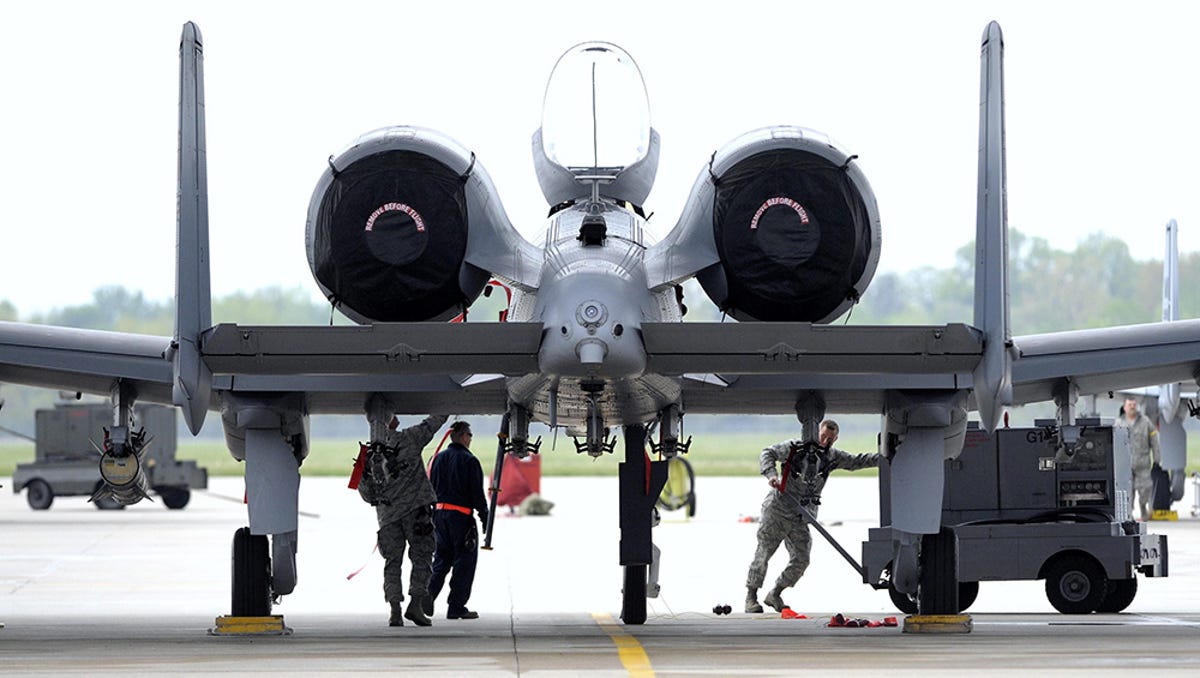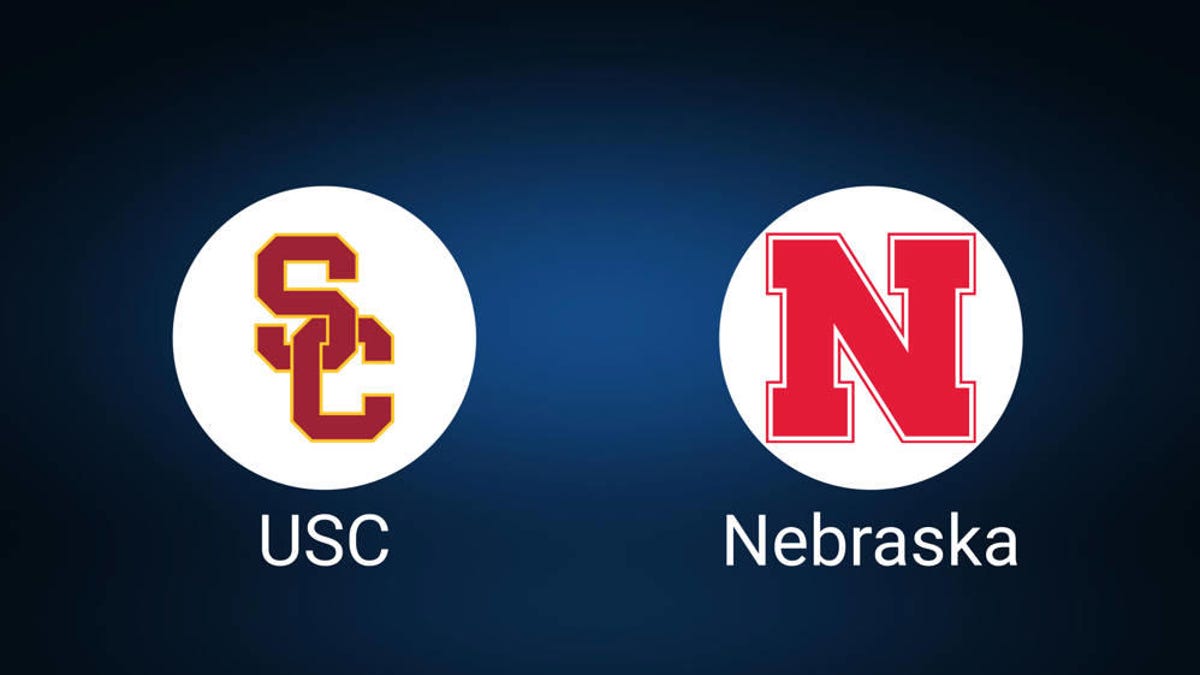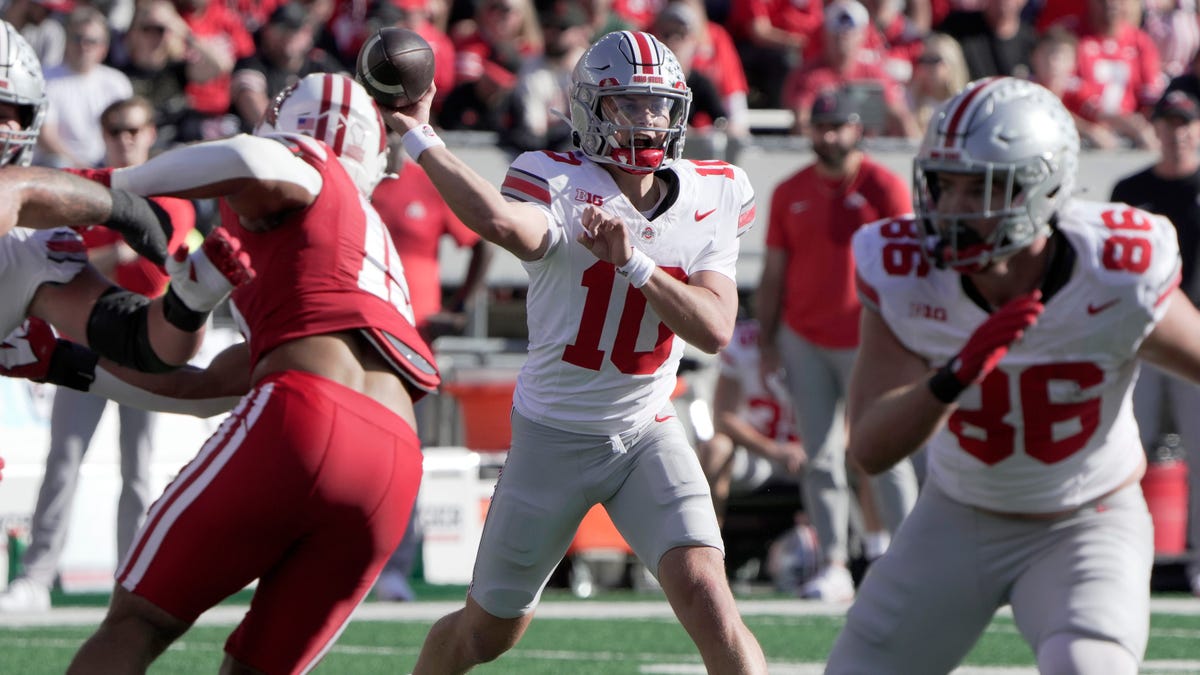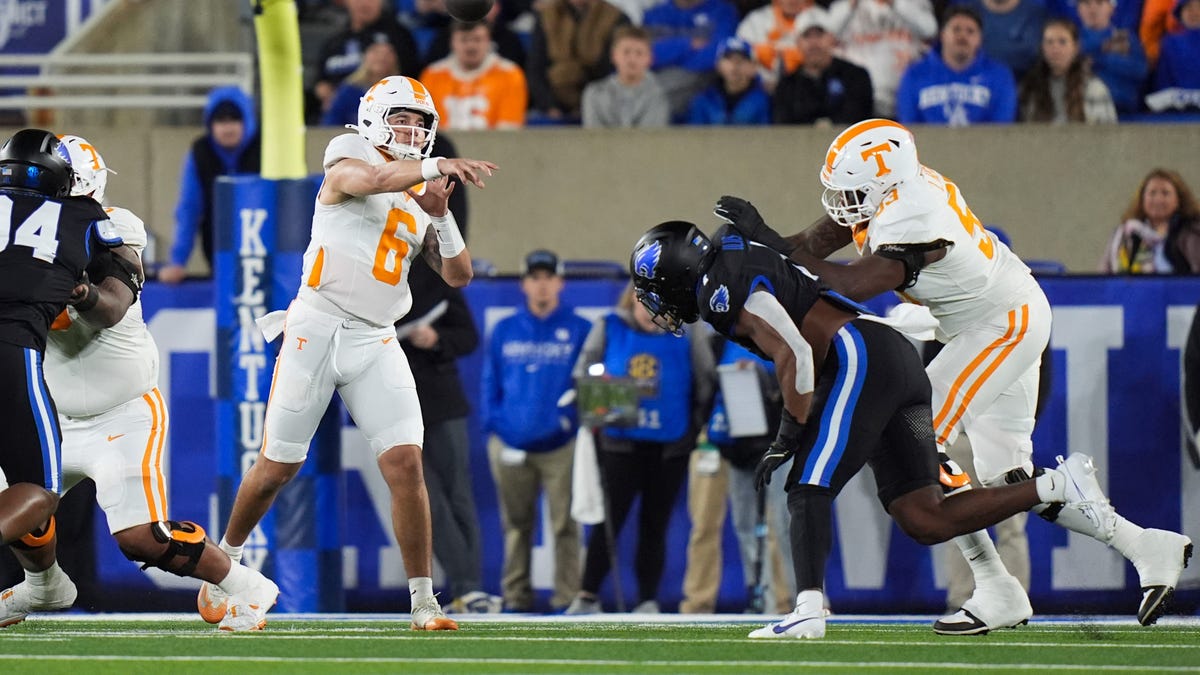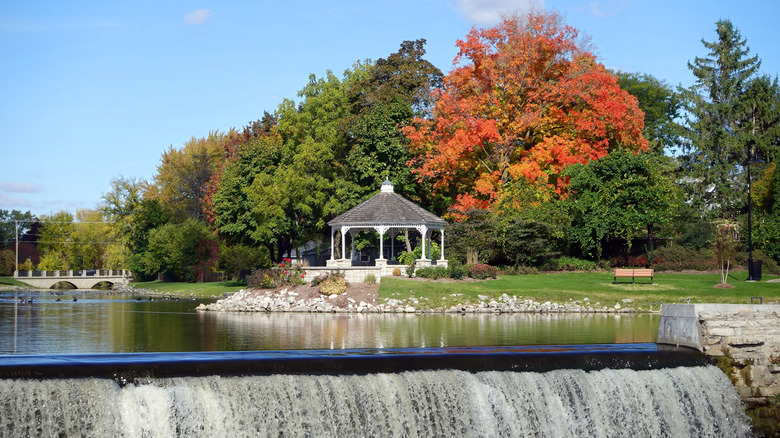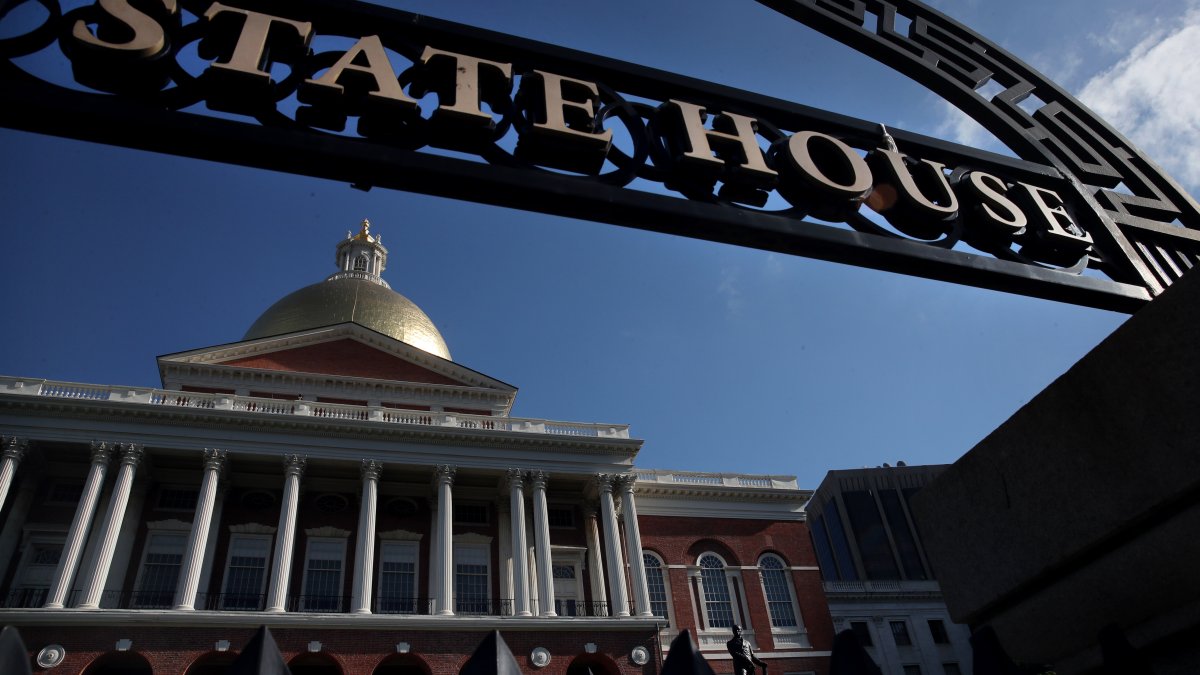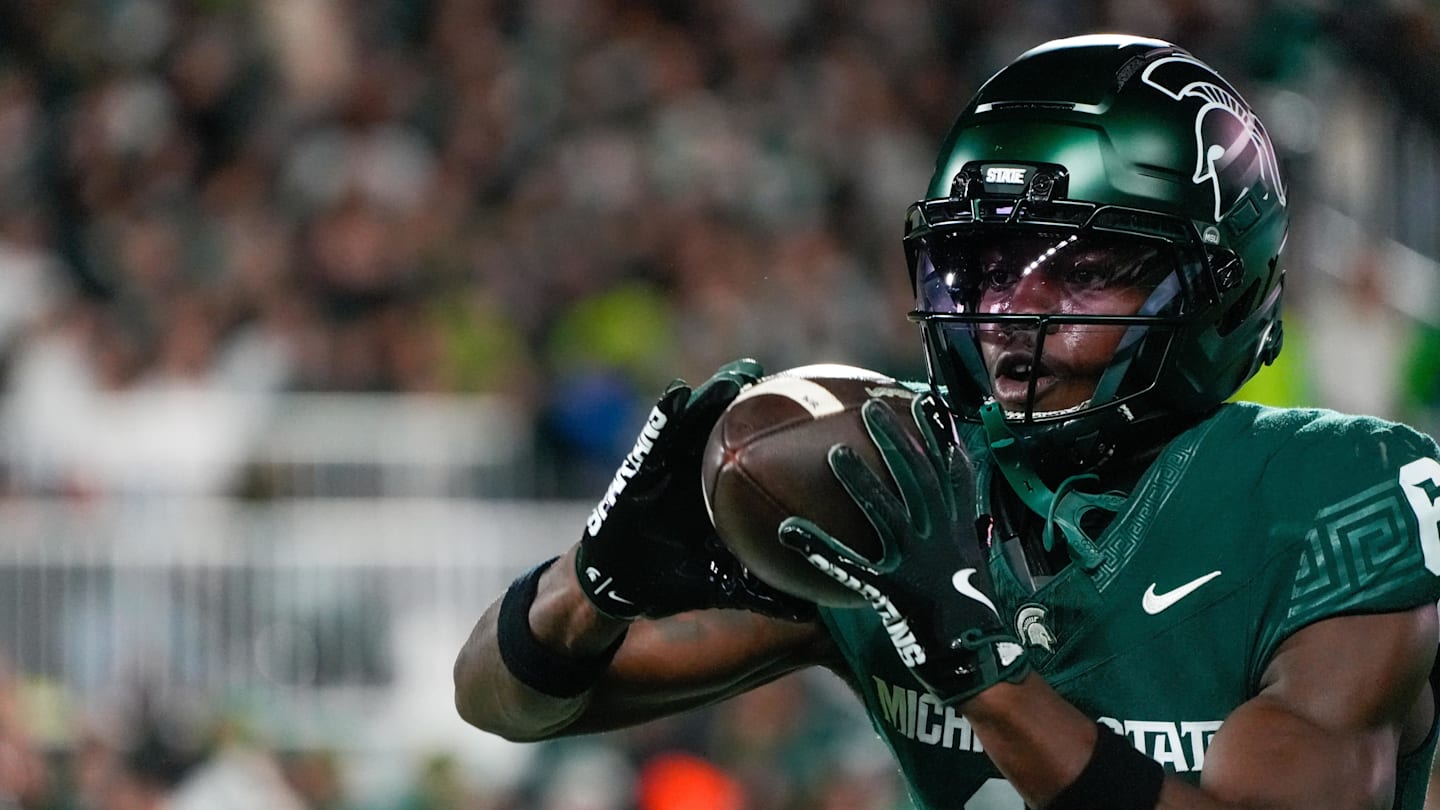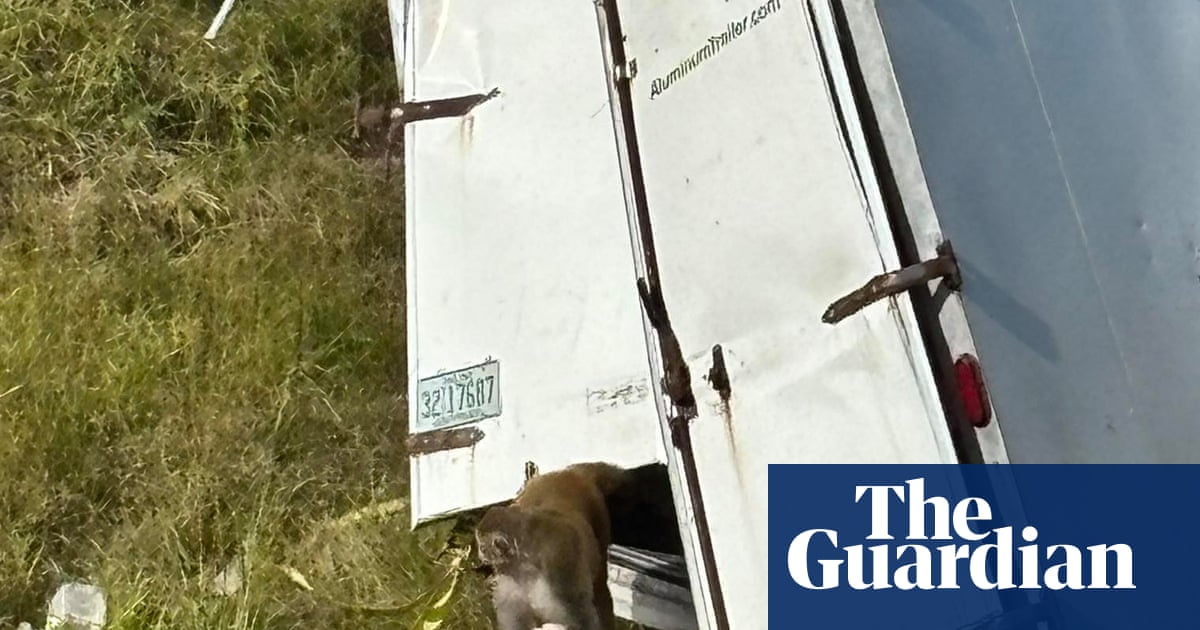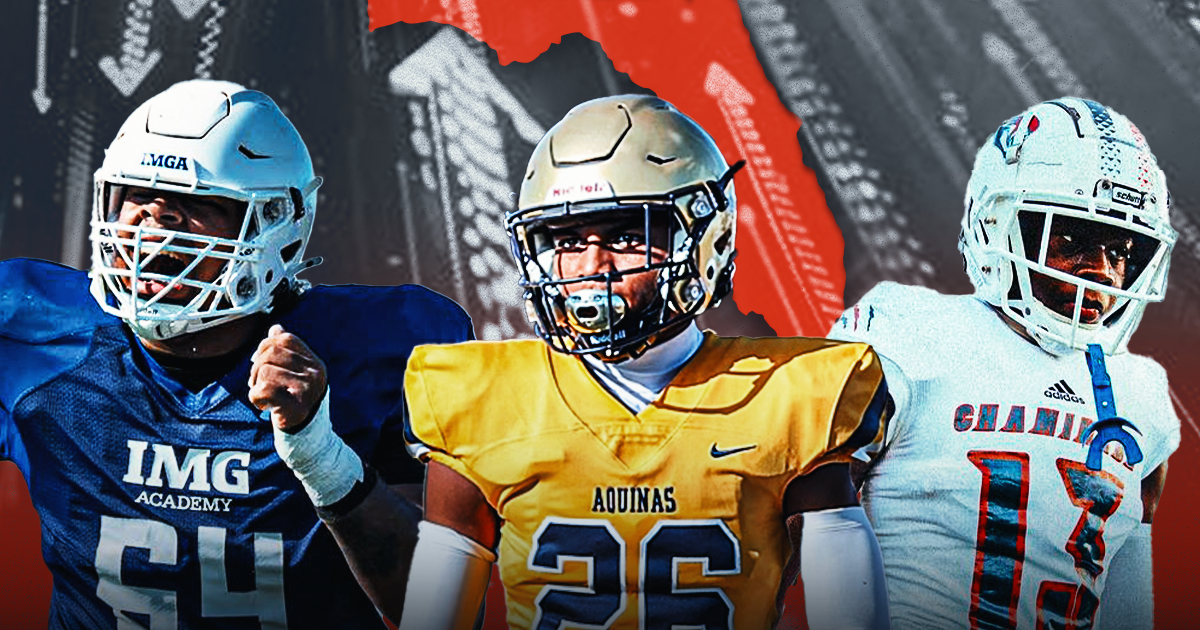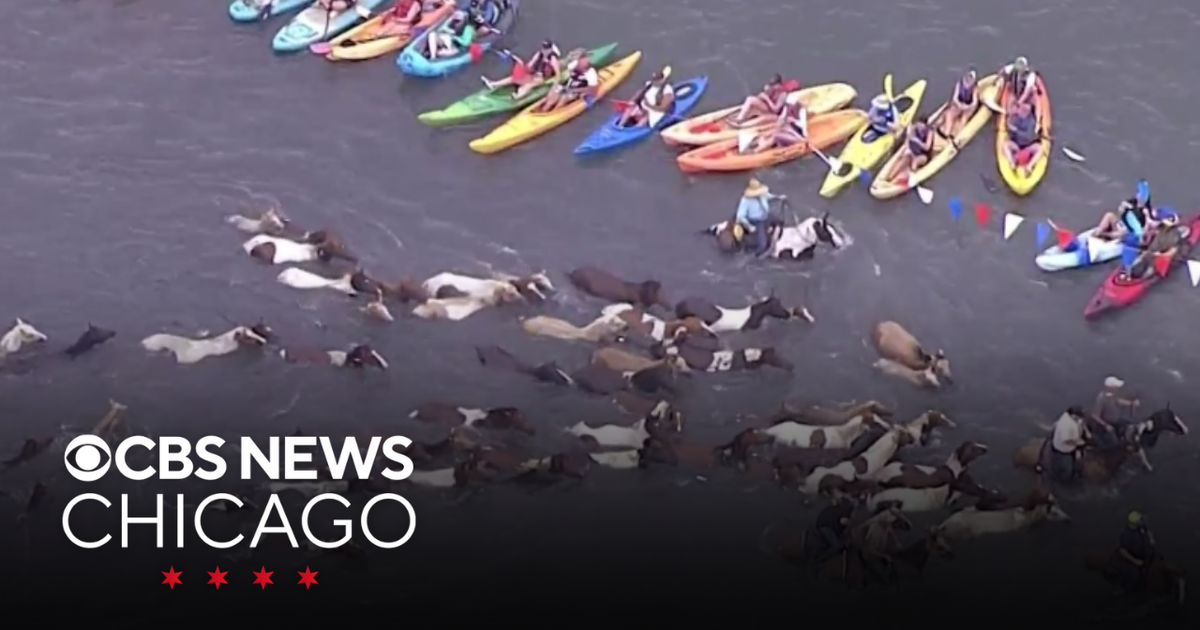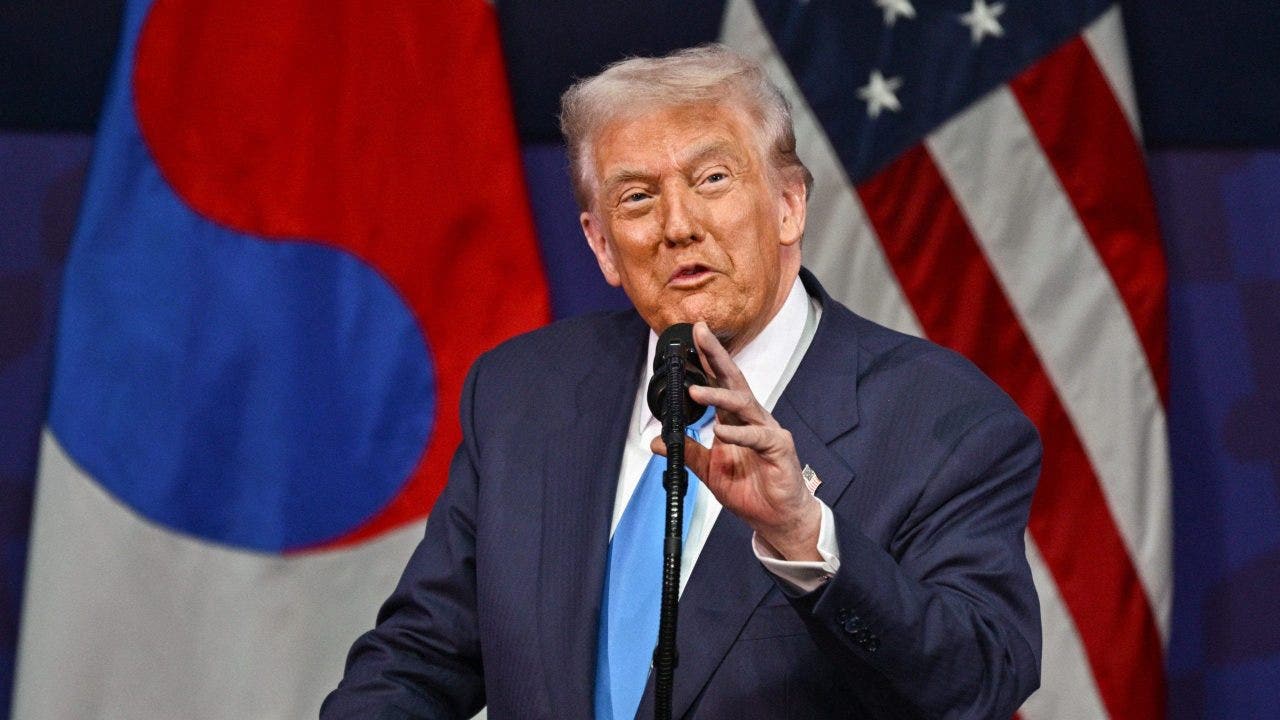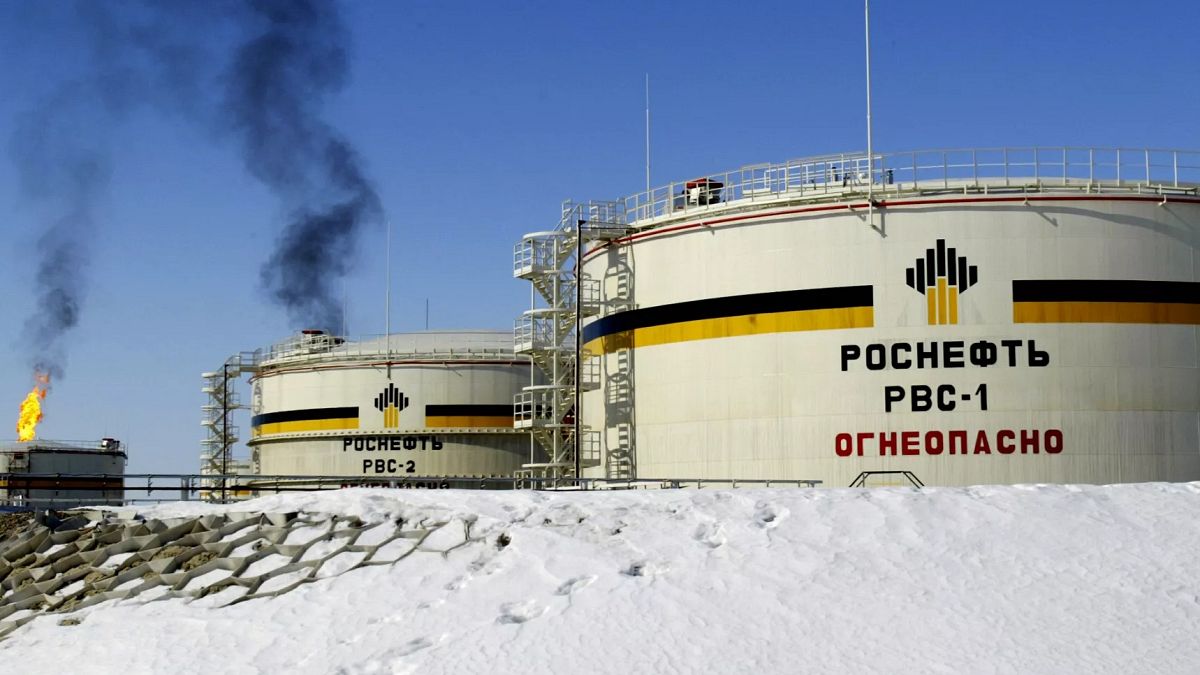Wisconsin
Three former Wisconsin Badgers make Utah Jazz G League training camp roster
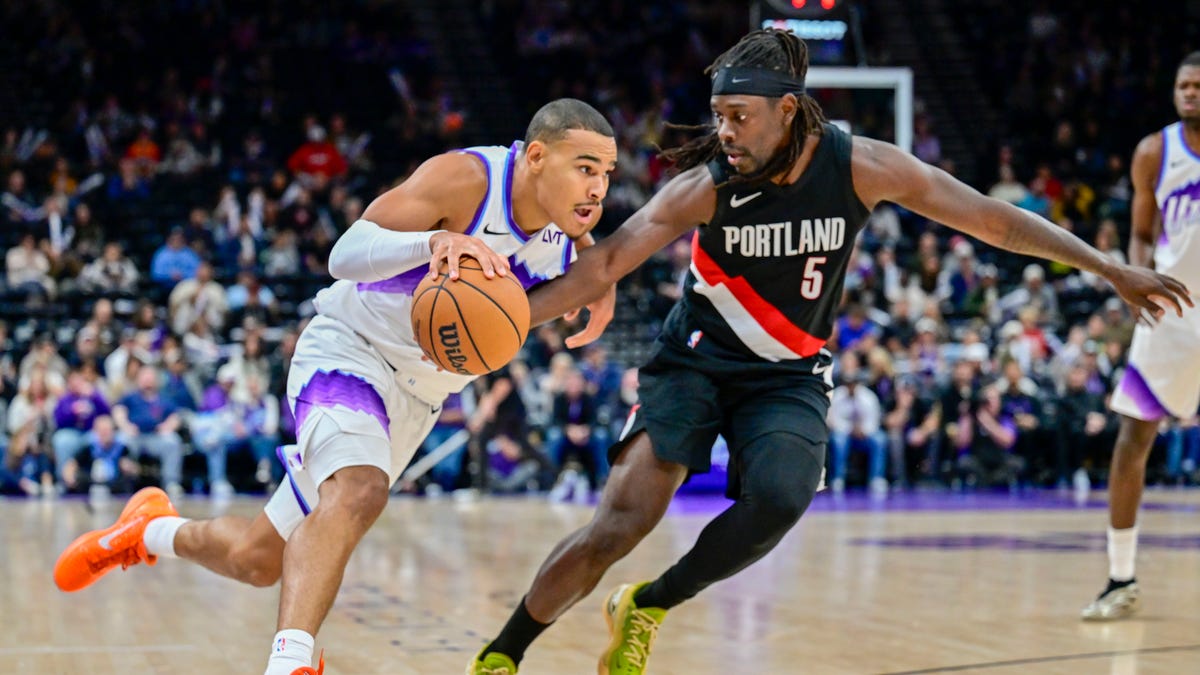
Recent Wisconsin basketball graduates John Tonje, Steven Crowl and Max Klesmit officially made the Salt Lake City Stars’ training camp roster on Monday. The Stars, the G League affiliate of the Utah Jazz, began their training camp on Monday. Their first game of the 2025-26 season is scheduled for Tuesday, Nov. 11.
Tonje’s inclusion on the roster is no surprise. Following an All-American 2024-25 season leading the Badgers, the Jazz selected him with the No. 53 overall pick in the 2025 NBA draft. He then officially signed a two-way deal with the organization in late August. He’s one of three two-way players on the Stars’ roster, along with Elijah Harkless and Oscar Tshiebwe.
Crowl, meanwhile, converted a Summer League roster spot into this training camp invitation. He should have an inside track at G League action, given his fast-growing experience within the organization.
Finally, this opportunity is Max Klesmit’s first at the NBA or G League level. He’ll likely need strong play throughout training camp to earn a spot on the team’s regular-season roster.
Contact/Follow @TheBadgersWire on X (formerly Twitter) and like our page on Facebook to follow ongoing coverage of Wisconsin Badgers news, notes and opinion

Wisconsin
Badgers football losses go beyond field and into Wisconsin’s economy, UW report says
Ripple effects could be felt in other UW athletic programs
The 2025 Badger football season is one fans already want to forget − but the negative economic impact could be felt well beyond the final game on Nov. 29.
If the team’s poor performance continues, it could reduce the program’s profit by $20 million annually, according to a new report from the Center for Research on the Wisconsin Economy, housed at University of Wisconsin-Madison
The ripple effects can be felt in other university athletic programs subsidized by the football program, and could impact student applications to the university, alumni donations, and research output, according to the report − titled “The Economic Impact of Badger Football’s Declining Performance.”
Beyond the financial blow to the campus, the report estimates the city of Madison could could lose up to $160 million, and the state could lose up to $280 million “stemming from reduced attendance, game day spending, tourism and reputational value.”
The UW Athletic Department disputes the findings of the report.
“Wisconsin Athletics respects the work and research of our world-renowned academic partners, along with their passion for the sports that represent our institution,” a department statement said.
“Although we do not believe that this study portrays a complete and accurate representation of the economic factors around the football program, we all share a common interest in its successful future.
“We welcome the opportunity to collaborate with the Center for Research on the Wisconsin Economy on any future works on this topic,” according to the statement.
Badger football is profitable
In 2023, the football team had revenue of $106. 7 million and expenses of $42.3 million, with the program earning more than $64 million, according to the U.S. Department of Education’s Equity in Athletics Data Analysis cited in the report.
In 2024, Badger football had $107.4 million in revenue according to its NCAA membership filing, and had expenses of $49.6 million − posting a profit of $57.8 million. The Badgers men’s basketball program earned a $7.3 million profit that year.
If the winning percentage falls from nearly 80%, as it was during the 2017 to 2019 seasons, to 50%, that could mean “Badger Football’s annual profit could drop by about $20 million,” the report reads.
The team this season so far has a 2-6 record with four games remaining in November.
Is it Luke Fickell’s fault?
Short answer: not in the beginning.
The report says the program’s profit didn’t decline during 2022 and 2023 despite the 14-12 regular season record. That was during Luke Fickell’s first two seasons as head coach.
“This is probably because there was a lot of excitement” about Fickell’s hiring, the report states.
Fans recently have been chanting “fire Fickell” at home games. Wisconsin Athletic Director Chris McIntosh addressed fans concerns in an Oct. 20 letter.
It said the football season has “fallen well short of our standards” and added the department is committed “to elevating the investment into our football program to position us to compete at the highest level.”
Financial impact is already being felt
This year the program is on pace to have the lowest attendance in more than 30 years with a 51,980 average scanned attendance during the first four home games. That’s according to data obtained via an open records request and analyzed by the Milwaukee Journal Sentinel.
But fans have been signaling their disappointment before this season.
According to the research center report, “Badgers sold 38,082 season tickets for general seating areas in 2025, down from 42,197 in 2024 and 41,206 in 2023.”
Football helps subsidize other programs, generates donations
The Athletic Department’s total profit was less than $11 million in 2023, including the football program’s $64 million profit.
“This suggests that the department’s other programs and operations are subsidized heavily by the football team,” the report states.
The report cites research that shows “when a male graduate former team wins its conference championship, his donations for general purposes increase by about 7% and his donations to the athletic program increase by about the same percentage.
“Moreover, if a male alumnus’s team won its conference championship during his senior year, his subsequent giving to the athletic program is about 8% a year higher.”
The Badgers last won the Big Ten football title in 2012.
“If the poor performance continues, its impact on alumni donations and engagement is likely to diminish,” the report reads.
Local economic impact of athletic program
College sports programs affect communities and states as fans go to games, restaurants, and bars, buy merchandise, and pay for hotel rooms.
The report compared the UW athletic program’s impact on Madison and Wisconsin with the University of MinnesotaTwin Cities program on Minneapolis area and Minnesota. Both football teams had similar performances in 2022 and 2023.
It showed the Badgers’ impact on Madison contributed to 3,360 jobs and $462 million of economic output.
The Gophers’ impact on the Twin Cities contributed to 1,152 jobs and $298 million of economic output.
Statewide, the Badger athletic program contributed to 5,640 jobs and $757 million of economic impact in Wisconsin. In Minnesota, the Gophers contributed to $474 million of economic impact.
The report says the Twin Cities population is larger than Madison’s population − making the latter “likely more sensitive to Badger Football’s performance.”
NIL and program investment
UW can revitalize the program by investing in facilities, recruiting budgets, NIL (name, image and likeness) deals for athletes, and competitive compensation for players and coaches, the report said.
The report estimates the Badgers NIL collective funding in 2023 and 2024 was $8.9 million. The highest spent in the conference was Ohio State at $20.2 million, it said.
NIL deals aren’t public information and the estimate is based on methodology from nil-ncaa.com/big10. .
Spending more money on the football program “could help reverse the team’s declining performance,” the report said.
“Enhanced facilities can attract top transfers and recruits, while better coaching and talent ensure the return on these assets are maximized,” it said. “Strategic, dual-focused investments are essential to rebuild competitiveness and mitigate the economic risks estimated above.”
Milwaukee Journal Sentinel reporter John Steppe contributed to this report.
Wisconsin
Wisconsin will join lawsuit against USDA to force release of FoodShare funds, Evers says
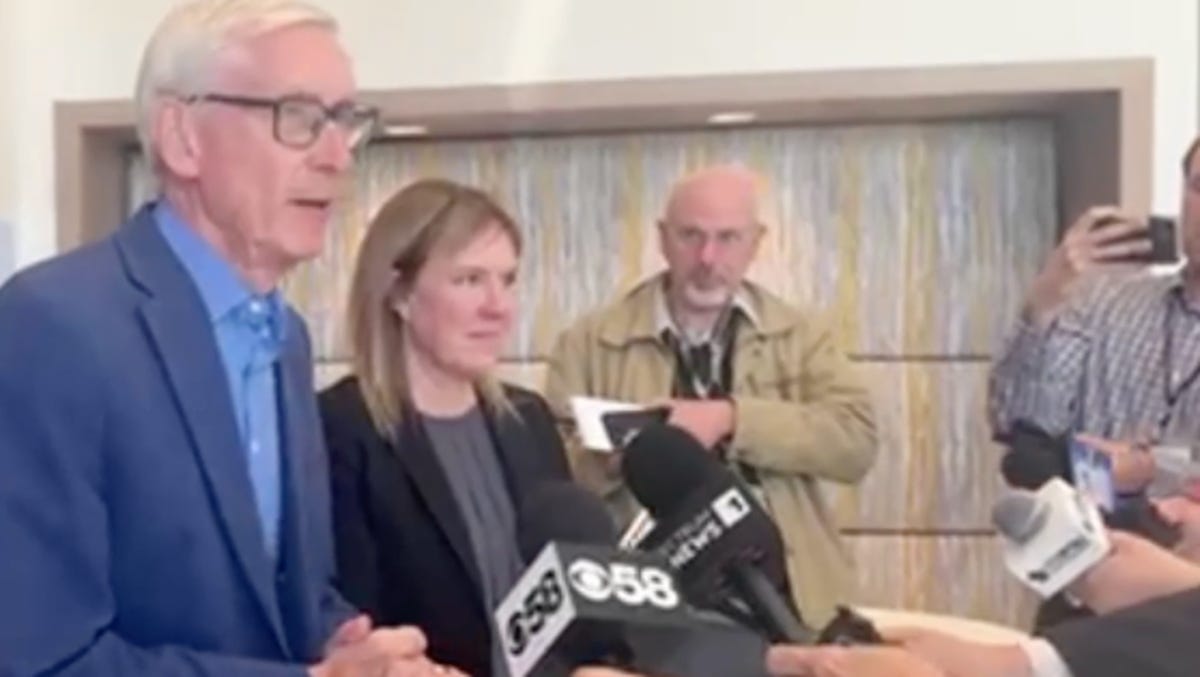
Wisconsin Gov. Evers speaks on the impact of the government shutdown
“I don’t care what all the excuses are in Washington D.C. They can fix this now, simple as that,” Gov. Tony Evers says of the government shutdown.
Wisconsin will join a multi-state lawsuit against the U.S. Department of Agriculture to force the release of contingency funding for FoodShare before benefits run dry for thousands of Wisconsin residents on Nov. 1.
Democratic Gov. Tony Evers made the announcement Oct. 27 at a roundtable event at the Milwaukee Public Library’s Martin Luther King Branch, where community advocates warned looming cuts to government programs would impact their businesses.
“The good news is, the federal government can (release the FoodShare money),” Evers told reporters. “They can do it; there’s nothing stopping them from doing it. In fact, we’re going to be suing them for not using the funds that they have.”
The forthcoming lawsuit will argue that both USDA and the Office of Management and Budget have previously and recently said that SNAP benefits are an obligation of the United States.
Before Friday, the USDA advised $3 billion worth of contingency funding could be used for administrative costs and benefit payments in the event of a shutdown. But on Oct. 24, the agency issued a new memo saying funding cannot legally be used for such purposes.
The lawsuit is scheduled to be filed just a few days before federal funding for the FoodShare program will evaporate because of the federal government shutdown.
At that point, FoodShare enrollees may use leftover benefits during the month of November but will not receive any new benefits until the government reopens.
Wisconsin and the other states suing the federal government together provide more than 21 million individuals with food assistance, according to Evers’ office.
State lawmakers could create a new state-funded appropriation to keep the program alive as the shutdown continues, but Senate President Mary Felzkowski said this week the Legislature is unlikely to do that, calling the matter a federal issue.
Evers cannot act alone by issuing an executive order to continue the program, his office said, because the state Legislature has the power to appropriate money.
In September, about $116 million in benefits were issued to FoodShare recipients, according to the nonpartisan Legislative Fiscal Bureau.
Wisconsin
A Scenic Waterfall Anchors Wisconsin’s Idyllic Milwaukee Suburb With Shops, Trails, And Creative Charm – Islands
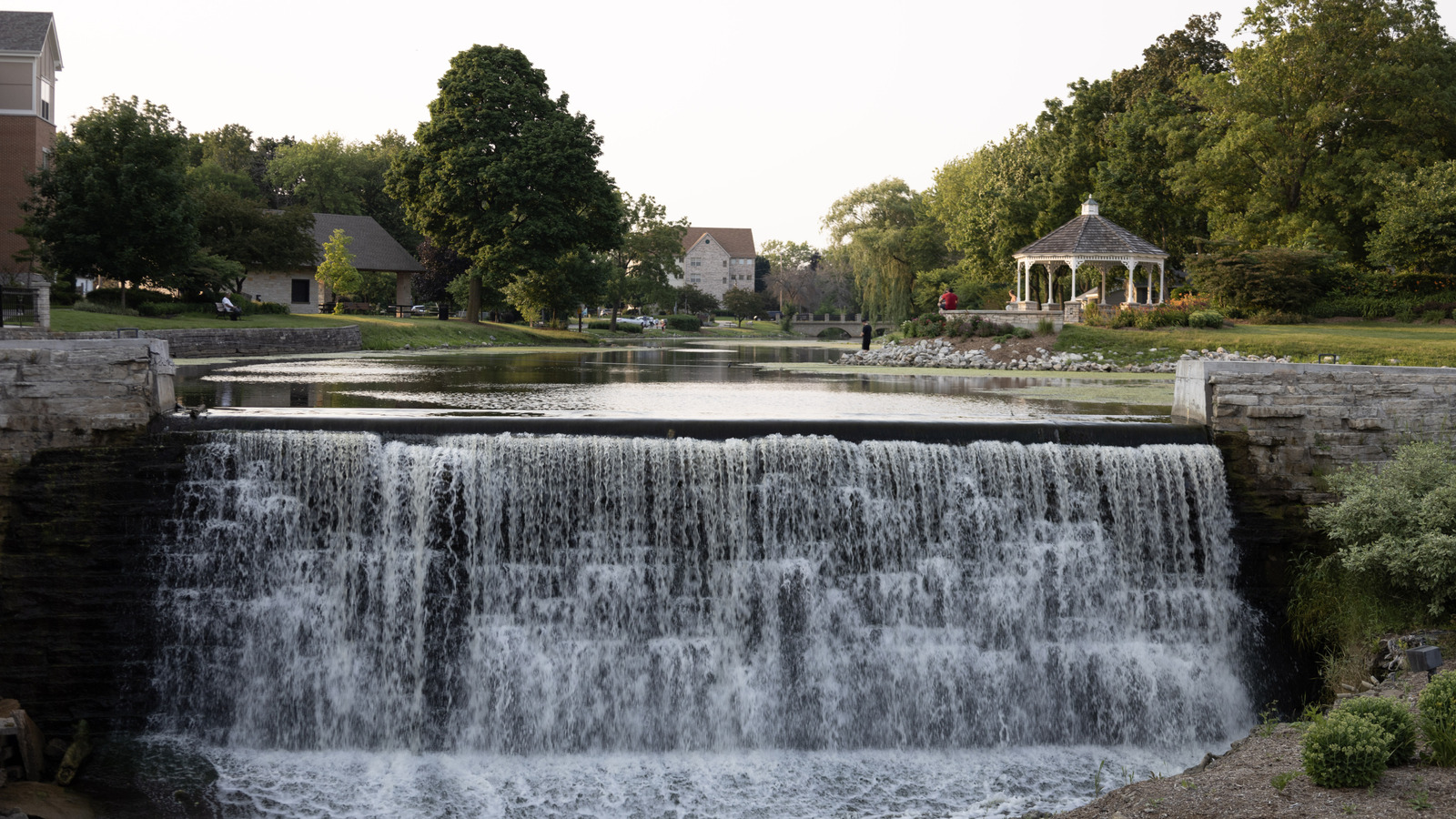
For an easy getaway from Milwaukee filled with gorgeous natural scenery and artistic spirit, this charming pocket of Wisconsin has it all. Like Westby and its unique Scandinavian flair, Menomonee Falls is one of the best hidden gems in Wisconsin, thanks to its small town charm brimming with history, a thriving local community bursting with artistry, and even a stunning waterfall or two. To reach this adorable suburb, fly into Milwaukee Mitchell International Airport, which is a 35-minute drive from town. Be sure to also spend some time in Milwuakee, which is a lively Midwestern city with beaches, breweries, and bliss. Buses also operate from the airport into the Menomonee Falls area, leaving every 20 minutes and requiring just under an hour ride. However, the closest bus stop is a few miles outside of town, meaning you will then need a taxi or Uber ride into Menomonee Falls.
Menomonee Falls is also easily accessible from other major cities like Madison, which is an hour-and-a-half away by car, and Chicago, which is a roughly two hour drive. Accommodation options are somewhat limited right in Menomonee Falls — but the 3-star Home2 Suites by Hilton Menomonee Falls Milwaukee is a well-rated choice. Here, enjoy amenities like free breakfast, free parking, a fitness center, and a pool. You’re also just about 30 minutes from Grafton, Wisconsin’s growing Milwaukee suburb with a vibrant downtown, giving you a chance to explore more of the charming Midwest.
Scenic nature in Menomonee Falls
Nature is abundant around Menomonee Falls, so be sure to spend some time outdoors while you’re here. One of the area’s best green spaces is the 16-mile Bugline Trail, which stretches from Menomonee Falls all the way to North Lake in nearby Merton. Along this paved trail, you can still see some of the limestone quarries that date back to the town’s early years.
You don’t need to venture far to see Menomonee Falls’ waterfalls — right within the downtown district, on Main Street, find one of the town’s highlights, the Leper Dam. First constructed in 1851 for a flour mill, the current dam dates back to 1954 and is a must-see. Tucked within the 2.5-acre Mill Pond Park, you’ll also find a picturesque gazebo and occasional outdoor events in this local cornerstone. To visit the town’s namesake falls, head to the 19-acre Lime Kiln Park — apart from the falls, find preserved lime kilns which date back to the late 1800s. And if you’d like to get a more complete look at Menomonee Falls’ rich history, head to Old Falls Village Historical Park and Museum, an 18-acre historical park that features historic homes and buildings, and often other events ranging from reenactments to beer gardens and orchestra concerts.
Menomonee Falls’ vibrant downtown
Tucked within Menomonee Falls’ downtown, you’ll discover an array of enchanting shops and creative corners. One of the town’s most delightful spaces is Poppy & Thyme, where you’ll find all sorts of handmade goods ranging from home goods to bath products. And if you haven’t found exactly what you’re looking for, why not make it yourself? Here, you can make your own custom perfume, candle, or even nail polish, meaning you’ll walk away with a Menomonee Falls souvenir that’s truly perfect for you.
As long as you’re with less than four people total, no need to make a reservation — just feel free to drop in and grab a seat at the make and take bar. If you’re planning to visit on a Saturday though, you still may want to make a reservation, as seats are first come, first served. The Art Lounge is another gem. Here, you’ll get to enjoy a cafe serving up flatbread pizza, cheesecake, beer, wine, and more, alongside an art gallery that offers numerous classes, workshops, and other lively events like music nights. The Art Lounge is closed on Sundays and Mondays. For even more options, take a quick stroll down Main Street, as it’s home to an assortment of boutique stores, restaurants, and other eclectic shops.
-

 New York6 days ago
New York6 days agoVideo: How Mamdani Has Evolved in the Mayoral Race
-

 World1 week ago
World1 week agoIsrael continues deadly Gaza truce breaches as US seeks to strengthen deal
-

 News1 week ago
News1 week agoVideo: Federal Agents Detain Man During New York City Raid
-

 News1 week ago
News1 week agoBooks about race and gender to be returned to school libraries on some military bases
-

 Technology1 week ago
Technology1 week agoAI girlfriend apps leak millions of private chats
-

 Politics1 week ago
Politics1 week agoTrump admin on pace to shatter deportation record by end of first year: ‘Just the beginning’
-

 Business1 week ago
Business1 week agoUnionized baristas want Olympics to drop Starbucks as its ‘official coffee partner’
-

 News1 week ago
News1 week agoTrump news at a glance: president can send national guard to Portland, for now
